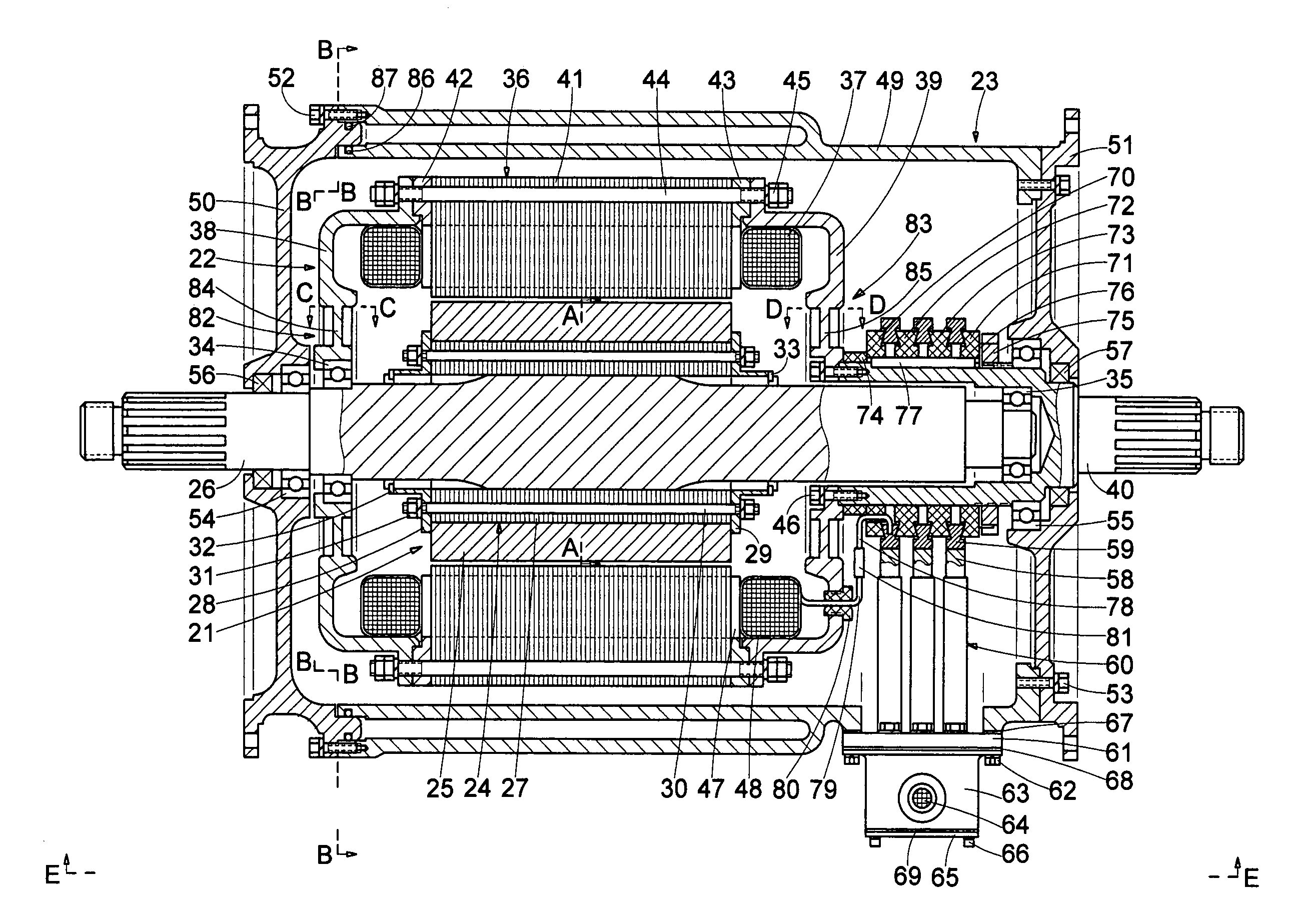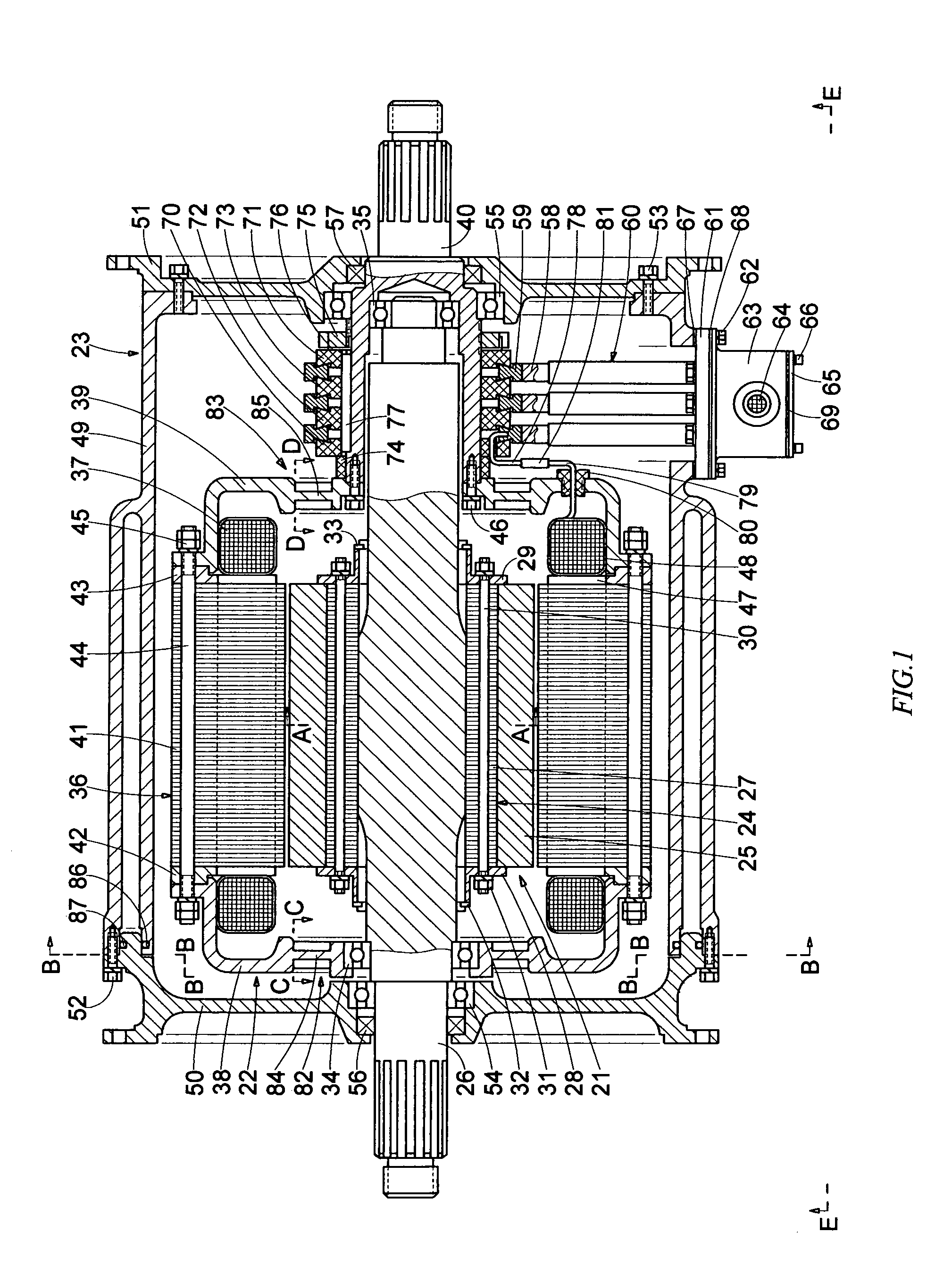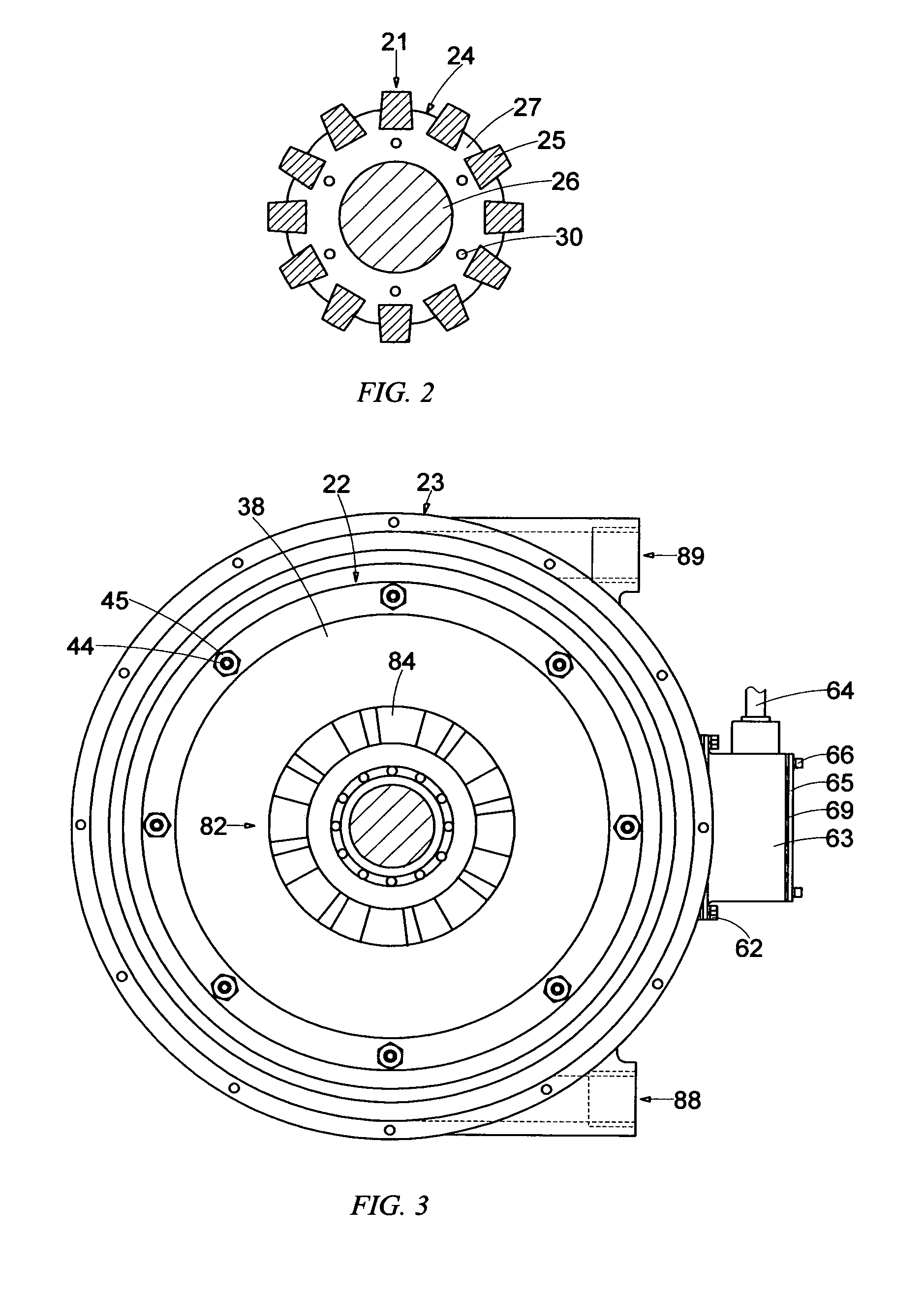Dual-rotor electric traction motor
- Summary
- Abstract
- Description
- Claims
- Application Information
AI Technical Summary
Benefits of technology
Problems solved by technology
Method used
Image
Examples
first embodiment
[0085]In this first embodiment, an external liquid-cooling system cools the motor enclosure 23. Usually, a motor liquid-cooling system includes a radiator and a fan for cooling the hot liquid coolant coming from the motor, a pump for circulating the coolant between the motor enclosure and radiator, and a plurality of connecting lines. Since such liquid-cooling systems are well known in the art, and for simplicity of drawings and description, the entire external cooling system is not shown, but only an arrangement of the motor enclosure for liquid cooling is illustrated and described.
[0086]Referring to FIG. 1, FIG. 3, and FIG. 6, in this embodiment, a part of the central cylindrical enclosure 49 has a double wall forming a substantially cylindrical cavity, in which the liquid coolant can flow. The first motor enclosure side flange 50, closes this cylindrical cavity, and two O-rings 86, 87 seal between the cylindrical enclosure and the first motor enclosure side flange.
[0087]An inlet ...
second embodiment
[0115]As it was mentioned earlier in this specification, the axial motion of the air, produced by the rotation of the fans, and the rotational motion of the air, produced by the rotation of the rotors, combine in a complicated spiral-like turbulent internal air circulation. Nevertheless, this complicated spiral-like air circulation will generally follow the close-loop lines shown in FIG. 22 or FIG. 23, depending on the opposite directions of rotation of the rotors. Although the dual-rotor motor is shown in these two figures, it shall be understood that this is only for purpose of illustration, and that the internal close-loop air circulation in all but one of the described in this specification embodiments of the dual-rotor motor will be substantially the same as the internal close-loop air circulation shown and described here in FIG. 22 or FIG. 23, depending on the opposite directions of rotations of the rotors. The exception is the briefly described embodiment that includes only o...
PUM
 Login to View More
Login to View More Abstract
Description
Claims
Application Information
 Login to View More
Login to View More - R&D
- Intellectual Property
- Life Sciences
- Materials
- Tech Scout
- Unparalleled Data Quality
- Higher Quality Content
- 60% Fewer Hallucinations
Browse by: Latest US Patents, China's latest patents, Technical Efficacy Thesaurus, Application Domain, Technology Topic, Popular Technical Reports.
© 2025 PatSnap. All rights reserved.Legal|Privacy policy|Modern Slavery Act Transparency Statement|Sitemap|About US| Contact US: help@patsnap.com



